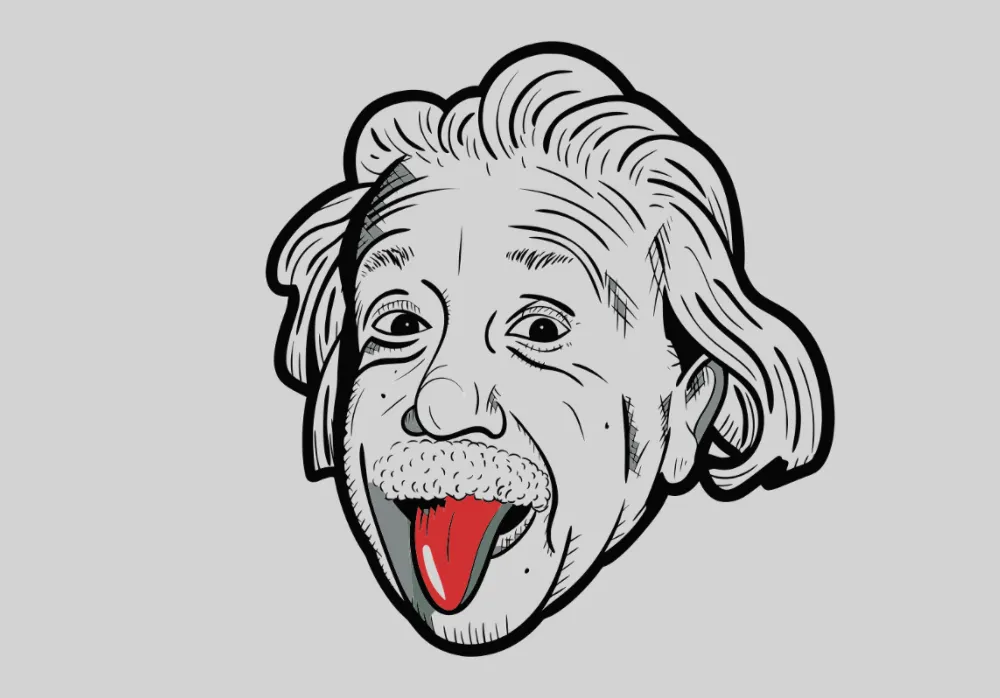Ana-Marija Nedić

Contact: amnedic AT umn DOT edu
Connect on LinkedIn
Codes repositories on GitHub
List of publications on Google Scholar
Maybe useful:
∙ Resources for young researchers
And some fun topics:
∙ Why is magnetic field denoted as ‘B’?
∙ How would you fit these data?
∙ Why a Nobel for blue LEDs?
∙ The times when Einstein blundered
The times when Einstein blundered
He solved big problems in atomic physics, which helped in the early development of quantum physics. He formulated a special theory of relativity known by the celebrated equation E = mc² and later developed a theory of General Relativity. With a deep intuition for the laws of nature, he shaped the physics of the 20th century, presenting his ideas with mathematical clarity that shows the beauty of physics.
Nevertheles… the times when Einstein blundered.

Subtle flaws in proving $E = mc^2$. Actually, in all 7 proofs he provided.
In a span of 40 years, Einstein produced 7 proofs for the famous eqaution $E = mc^2$, in 1905, 1906, two in 1907, unpublished paper in 1912, and two more papers much later, in 1935 and 1946. Incredibly as it sounds, all these proofs had a mistake, in one way or the other. From making unjustified assumptions or restrictive approximations to making logical mistakes, Einstein actually never succeeded in proving the famous equation without an error. The proof of this equation for closed systems was given by Max Laue in 1911 for a time-independent case and was generalized by Felix Klein in 1918.
He thought light bending by gravitational lenses will never be observed
According to the general relativity, the light follows the curvature of spacetime, and when it passes around a massive object, it bends - the phenomenon known today as gravitational lensing.
Einstein and several other physicists speculated about this phenomenon since 1912, and Einstein is credited to be the first one who discussed the effect, although he published his calculations years after others, in 1936. For gravitational lensing to be observed, the source, the lens, and the observer have to be in almost perfect alignment. Since the initial discussion was centered only around the stars, it was unanimously believed that the necessary alignment would be highly improbable, and thus the effect would be nearly impossible to observe.
In 1936 Einstein reluctantly published his short calculation and conclusion on the topic, after being urged by electrical engineer and amateur astronomer Rudi Mandl. He specifically mentioned that Mandl had urged him to publish it, although he personally didn’t think it was worth doing, adding: “Of course, there is no hope of observing this phenomenon directly.”
Only a year later, astronomer Fritz Zwicky was the first who considered gravitational lensing from galaxies. As much more massive and bigger in dimensions than a single star, the chances to observe gravitational lensing from a galaxy are much higher. First gravitational lenses were discovered 40 years later, in 1979.
His objections to quantum physics
Einstein played a big role in setting the grounds for the formulation of quantum physics with his work on the photoelectric effect in 1905 for which he was later awarded the Nobel prize. 20 years later, however, he was becoming unsatisfied with how quantum physics evolved, even though the ideas of quantum physics were quite accepted in the science community at the time. After 1933, he was almost the only one who thought that although logical, quantum physics is incomplete.
In a public debate with Niels Bohr, Einstein challenged certain principles of quantum mechanics, notably refusing to accept Heisenberg’s uncertainty principle. He is famously remembered for saying, “I, at any rate, am convinced that He [God] does not play dice,” to which Bohr supposedly replied, “Einstein, stop telling God what to do.”
He didn’t believe gravitational waves exist, even though he proposed them first
Soon after developing the theory of General Relativity, Einstein began to wonder if there might be waves associated with the field of gravity in analogy to electromagnetic waves. In 1916 he introduced gravitational waves, literal ripples in spacetime. Even though the concept was relatively new and there were no observations to support their existence, the analogy with the electromagnetic waves was so compelling that by the 1930s most scientists believed that the gravitational waves must exist.
Einstein moved on to other problems, but when he returned to the question of gravitational waves two decades later, he concluded that gravitational waves couldn’t exist because they would create singularities in space. He wrote to his friend Max Born:
“Together with a young collaborator, I arrived at the interesting result that gravitational waves do not exist, though they had been assumed a certainty to the first approximation. This shows that the non-linear general relativistic field equations can tell us more or, rather, limit us more than we have believed up to now.”
When Einstein submitted a paper under the title “Do Gravitational Waves Exist?” to the journal Physical Review, the journal’s editor sent it back for a revision, writing “[that he] would be glad to have [Einstein’s] reaction to the various comments and criticisms the referee has made”
When Einstein submitted his paper “Do Gravitational Waves Exist?” to Physical Review, the editor sent it back for revision, requesting Einstein’s response to the referee’s remarks, saying “[that he] would be glad to have [Einstein’s] reaction to the various comments and criticisms the referee has made”. Outraged, Einstein withdrew it, replying:
“We (Mr. Rosen and I) had sent you our manuscript for publication and had not authorized you to show it to specialists before it is printed. I see no reason to address the - in any case erroneous - comments of your anonymous expert. On the basis of this incident I prefer to publish the paper elsewhere.”
By the time he submitted it to another journal, he radically altered his conclusions as he corrected his mistake. The revised paper argued that gravitational waves do, in fact, exist. He found out that the singularity was in fact, unreal, but related to the choice of the coordinate system. Einstein was the first who understand it, analogously to the problem one encounters when attempting to find the longitude of the North Pole.
The gravitational waves were observed in 2016, exactly 100 years after they were first predicted by Einstein.
“Fixing” the equations of General Relativity by arbitrarily adding a constant
One of the implications of Einstein’s General Relativity was that the universe isn’t static, but it’s either expanding or contracting. At the time everyone assumed that the universe was static and having a dynamic universe was unthinkable to Einstein, too. Two years later, without any justification, he added an additional parameter $\Lambda$ to his equations, to which he gave a specific value, just to force his model of the universe to remain static and eternal. He named it a cosmological constant.
10 years later, in 1927, the Catholic priest and astronomer Georges Lemaître presented the idea that the universe might be expanding. In the same year, this was confirmed by Edwin Hubble from his astronomical data about the recession of nearby galaxies and this relation is today known as Hubble’s law. A few years later, Einstein finally accepted that the universe is expanding famously calling the introduction of a cosmological constant “the greatest stupidity of his life”.
Until the late 1990s, most physicists assumed the cosmological constant is zero. Surprisingly in 1998 when it was discovered that the universe is not only expanding with a constant velocity but that this expansion accelerates, it implied the possibility that the cosmological constant could have a nonzero value after all. It is this constant that is popularly called dark energy. The Big Bang Theory is one of the models that assume the cosmological constant is nonzero. So this Einstein’s blunder maybe wasn’t that much of a blunder after all!
In conclusion, don’t be like Einstein, don’t blunder!
Joking aside, maybe just don’t take your mistakes too personally — like Einstein. When writing a book on the evolution of physics, his coauthor Leopold Infeld mentioned taking extra care because Einstein’s name would appear on it. Einstein laughed and replied:
“You don’t need to be so careful about this. There are incorrect papers under my name too.”